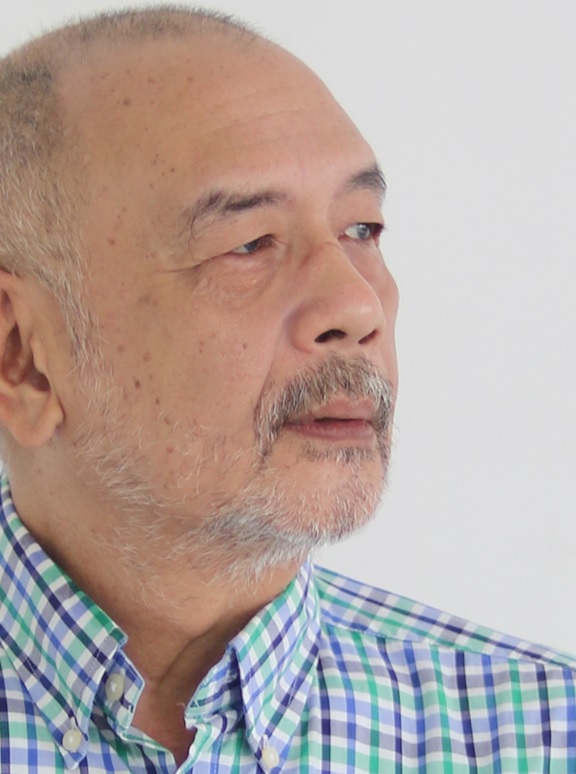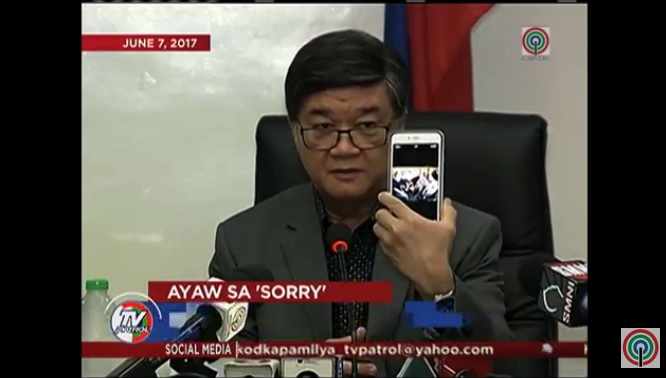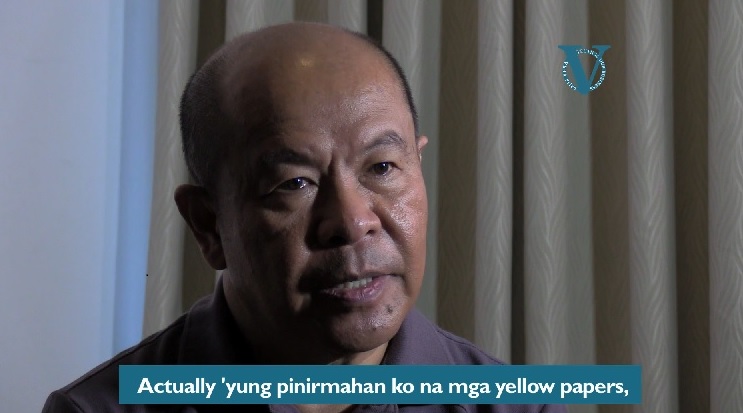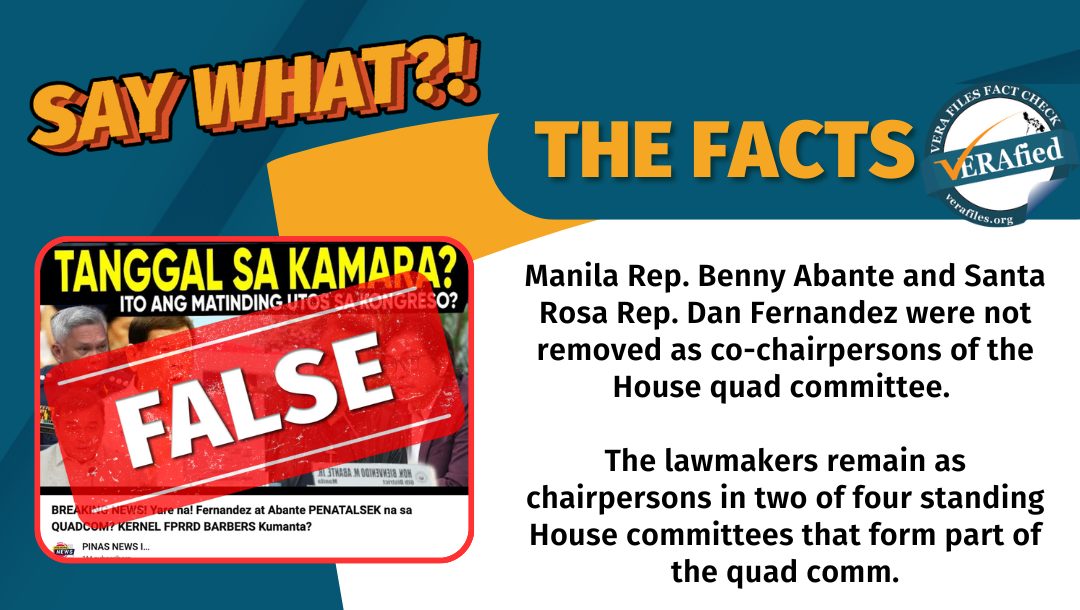He was one of Rodrigo Duterte’s major henchmen. What exactly does a henchman do? He serves by way of his boss’s crime and violence.
A henchman is more than an enabler. That was the role of Vitaliano Aguirre II before and after Duterte became president. And so correctly, the International Criminal Court included him in the complaint of mass murder against Duterte filed in April 2017. And rightly so must he be indicted.
Let’s review their ties to each other. Duterte had shallow pockets, appointing mostly his law classmates and fraternity brothers to high government positions, even in the judiciary. But Aguirre stands out among all of them.
In 1967, Aguirre entered the San Beda College of Law where he became classmates with Rodrigo Duterte. They also became fraternity brothers in the Lex Talionis Fraternitas. Not everyone from San Beda Law became scoundrels. The school produced some of the best legal luminaries of the land.
There was the magistrate Florenz Regalado who scored the highest grade in the history of the Philippine Bar, a record still unsurpassed. There was the brilliant and incorruptible Rene Saguisag, cum laude of 1963 and 6th placer in the Bar. One of its brightest alumni was Leila de Lima, salutatorian of her graduating class and 8th placer in the Bar.
But Duterte and Aguirre were sui generis. They were of their own kind because they went on to become partners in crime.
In 2009, De Lima as chair of the Commission on Human Rights (CHR) conducted an investigation into the Davao Death Squad killings. That investigation was a milestone. Some of the DDS hitmen had testified (no, not Lascañas and Matobato; there were others before them). The testimonies all pointed to a killing field where executions took place and where the dead were disposed in shallow graves. That was the Laud Quarry.
It was a huge tract of land where limestone quarrying was taking place. But there were also forested areas as well as caves because of the karstic landscape. No one in Davao city knew what lay hidden in Laud Quarry except the city mayor Duterte and his DDS assassins. But witnesses had testified in the De Lima investigations and for which she had secured a court warrant to search the place.
With the help of police Scene of the Crime Operatives (SOCO) deputized by the CHR, the De Lima team was able to enter Laud Quarry and excavate. First they found a skull and thigh bone in one of the caves. And then from a mass grave, they unearthed bone fragments from several skulls (one with a gunshot mark), several arm, leg and thigh bones, vertebrae, collar bones, pelvic bones, rib fragments, all in all totaling hundreds of pieces.
The Manila Regional Trial Court Branch 34 issued the CHR’s search warrant. Then the quarry owner was able to secure a temporary restraining order. The search was halted. The quarry’s owner was Ben Laud. He was an ex-policeman. But that’s not all. The investigation uncovered that he was an assassin in the Duterte death squad. How was he able to secure a TRO? His lawyer was Vitaliano Aguirre II.
The confessed DDS team leader Arturo Lascañas describes Aguirre’s trip to Davao at the time De Lima was there and after the bones were unearthed. News stories by then had related the discovery. Aguirre, from Lascañas’s narration in his affidavit submitted to the ICC, was in Davao city to do damage control.
Lascañas was in the car with another DDS operative to drive Aguirre around town. Aguirre told Lascañas how to counter the breaking news about the human skeletal remains. His damage control was to lie: “Tell them the bones belong to World War II burials.” Aguirre was certainly in the know about the summary killings headed by his classmate and fraternity brother.
In 2016, the man who prescribed obstruction of justice to the Davao Death Squad was gifted with the position of secretary of justice. It was pivotal – his role was to hide Duterte’s crimes from the Filipino people. After all, what are fraternity brothers for? Consider the following records:
In February 2017, one of Aguirre’s first acts as justice secretary was to execute the will of Duterte to exact vengeance on senator Leila de Lima for exposing the Davao Death Squad in 2009. A Bureau of Corrections confidential document had surfaced that attested to Aguirre’s order to provide special privileges as a reward for high profile inmates who testified for the fabricated drug charges against De Lima. Upon Aguirre’s orders, the inmates enjoyed lavish lifestyles: use of electronic gadgets, smart television sets, air-conditioning, internet and cellular phones. Aguirre of course was never held liable for it under the Duterte regime.
In June 2017, Aguirre’s Department of Justice downgraded the charge against the 19 policemen led by Superintendent Marvin Marcos from murder to homicide. This was the team responsible for the rubout of Albuera, Leyte mayor Rolando Espinosa inside the Baybay city jail. Lascañas had personally intimated to me that Espinosa was considered a competitor in the drug trade that Duterte was protecting. The Senate recommended murder charges. Aguirre downgrading it to homicide was a “big blow to the justice system in the country,” lamented senator Franklin Drilon.
In November 2017, Aguirre’s Department of Justice cleared from charges former Bureau of Customs (BOC) chief Nicanor Faeldon related to the P6.4B shabu shipment that passed through Customs under Faeldon’s watch. The Philippine Drug Enforcement Agency (PDEA) had slapped charges of conspiracy to import illegal drugs, protecting drug traffickers, and corrupt practices of public officers against Faeldon and 11 BOC officials and employees.
Aguirre’s DOJ said there was lack of probable cause. Instead, it recommended charges against the trucker Mark Ruben Taguba II and the warehouseman Fidel Anoche Dee. Taguba had testified in the Senate that the shipment belonged to the Davao Group of Paolo Duterte and Manases Carpio, husband of Sara Duterte. That was why Aguirre’s intervention was needed.
In March 2018, Aguirre’s Department of Justice dismissed charges of drug trading and conspiracy against Cebu businessman Peter Lim. The businessman was a known Duterte supporter and friend. The PNP’s Criminal and Investigation Detection Group had identified Lim as having shipped “staggering amounts of shabu.” There were confessions from witnesses. Aguirre’s DOJ did not give weight to the confessions.
If it was not protecting drug lords identified with Duterte, Aguirre’s job was to cover the death squad tracks of his fraternity brother. There was nothing in between.
How is Aguirre now? His son Aristotle is currently the municipal mayor of Mulanay, Quezon Province. The Quad Committee of the House of Representatives investigating drugs and extrajudicial killings under the Duterte regime must not let Vitaliano Aguirre II off the hook. With the unbelievably fast decline of the Duterte influence we are seeing before our eyes, now is the time to seize the moment. Aguirre must face the bar of justice. Or in the ICC as a court of last resort.
He belongs to jail.
The views in this column are those of the author and do not necessarily reflect the views of VERA Files.





